20 min to read
As a digital marketing agency, we constantly seek to optimization of resources and investments. Focusing on the best formats, messages, and products are directly related to enhancements in performance. With the boom of social media platforms and the increasing demand for visual content, incorporating video into your marketing strategy can be a game-changer. This post will explore critical points highlighting how video production can propel your business growth and help you achieve remarkable success. The video has become a powerful tool for businesses to get audiences, expand the brand message, and drive traffic.
CodeDesign is the leading digital marketing agency in Lisbon Portugal.
Enhanced Brand Awareness
Video production enables businesses to create compelling visual content that leaves a lasting impact on viewers. Companies can significantly increase brand awareness by crafting engaging videos that reflect their brand's personality, values, and offerings. A well-produced video and professional video marketing for high-profile brands have the potential to impact a target audience, and drive recognition and recall. Whether through social media campaigns, explainer videos, or product demonstrations, videos can reach a wider audience, generate buzz, and establish your brand as a market leader.
You see, video marketing is not just a trend. It's a powerful way to communicate your brand story, explain your value proposition, and build relationships with your customers and prospects. Think about it, what can be more compelling and engaging than a well-produced video?
Videos offer an ideal platform for your brand to create an emotional bond, simplify complex information, and engage the audience. Videos can provoke emotions and influence the viewer's behavior. By injecting personality into your videos, you can establish an emotional connection that text can't match. Now imagine:
- Explainer Videos - These videos clearly understand your product or service. They are short, engaging, and designed to explain how your product solves a customer's problem.
- Testimonial Videos - Positive reviews from real customers increase trust. A testimonial video can provide social proof and strengthen your brand's credibility.
- Behind-the-Scenes Videos - Behind-the-scenes videos humanize your brand, showing the effort and passion of delivering a product or service. It makes your brand more relatable and authentic.
Read this complete guide on digital marketing funnel and then choose the right digital marketing channel for your business.
Improved Audience Engagement
Videos have a unique ability to captivate and engage audiences more effectively than any other form of content. Through storytelling, visuals, and sound, videos evoke emotions, entertain, and educate viewers. You can build a loyal customer base by producing high-quality, relevant videos and fostering deeper connections with your target audience. The immersive nature of videos encourages viewers to spend more time engaging with your brand, increasing the likelihood of them taking action and becoming customers. Increased engagement translates into increased conversions, customer loyalty, and positive word-of-mouth referrals.
Certainly, understanding engagement metrics is key to measuring the success of your video ads. Here are the top 10 engagement metrics that you should be paying attention to:
-
View Count: This metric shows how often your video has been viewed. It's a basic measure of how far your video is reaching.
-
Click-Through Rate (CTR): CTR measures the percentage of viewers who click on your video ad. A higher CTR can indicate a successful ad that sparks interest.
-
Watch Time: Watch time or view duration is the total time viewers have spent watching your video. It's an important measure of how engaging your video is.
-
Completion Rate: This metric shows the percentage of viewers who watch your video to the end. A higher completion rate can indicate a more engaging video.
-
Engagement Rate: Engagement rate includes actions like likes, shares, comments, and other forms of interaction. A higher engagement rate signifies that your video is sparking conversation and interest.
-
Conversion Rate: The conversion rate indicates the percentage of viewers who took a desired action after watching your video, such as purchasing, signing up for a newsletter, or filling out a form.
-
Bounce Rate: The bounce rate measures the percentage of viewers who left your site after viewing only the video. If your bounce rate is high, it might indicate that your video isn't effectively engaging viewers or leading them to other parts of your website.
-
Social Sharing: This measures how often your video has been shared on social media platforms. More shares can expand your video’s reach and increase brand awareness.
-
Feedback: While not a quantitative metric, qualitative feedback through comments or reviews can provide valuable insight into how well your video resonated with viewers.
-
Average Percentage Viewed: This metric shows the average percentage of your video viewers watch. If this number is low, it could mean your video isn't holding viewers' attention.
Check these Amazon FBA tips to grow your business and see how optimising your Amazon listing could help you grow.
Boosted Conversion Rates
One of the most significant benefits of video production is its impact on conversion rates. Studies have shown that incorporating videos on landing pages can increase conversions by up to 80%. Videos have the power to explain complex concepts, showcase product features, and address customer pain points more effectively than text alone. By leveraging the persuasive nature of videos, businesses can create a seamless sales funnel and guide potential customers toward purchasing. Through compelling storytelling and visually appealing content, videos instill confidence in viewers, making them more inclined to convert into paying customers.
Enhanced SEO Performance
In the ever-evolving world of search engine optimization (SEO), video content plays a crucial role. Search engines, like Google, prioritize websites that include video content, as it enhances user experience and increases the time spent on a page. By optimizing videos with relevant keywords, compelling titles, and meta descriptions, businesses can improve their website's ranking in search engine results pages (SERPs). This, in turn, drives organic traffic, improves visibility, and ultimately boosts business growth. Videos are also more likely to be shared and linked to, further strengthening your website's authority and SEO performance.
Videos can significantly boost your SEO performance, allowing you to rank higher on search engine results pages (SERPs). Here's how:
- Increased User Engagement: Videos can keep visitors on your site longer, increasing "dwell time," a factor that Google considers when ranking your site. The more engaging and informative your video, the longer users will stay on your site, signaling to Google that your site is valuable.
- Improved Click-Through Rates: Video content is more likely to get clicked on than plain text, increasing your click-through rates (CTR). A higher CTR is a positive signal to search engines, helping improve your ranking.
- Boosted Social Shares: Videos are highly shareable, especially on social media. The more your video is shared, the more backlinks you generate, which are beneficial for SEO.
- Rich Snippets and Video Thumbnails: Using video on your site and correctly tagging it with schema markup enables search engines to create "rich snippets," which are enhanced descriptions of your page on SERPs. Video snippets draw more attention and increase your CTR.
-
Increased Brand Awareness: Videos help create brand awareness, which can lead to increased search volume for your brand. This increased brand popularity can contribute to SEO performance. Read this guide on
E-commerce supply chain and
voice search optimization.
Examples of how this works in practice:
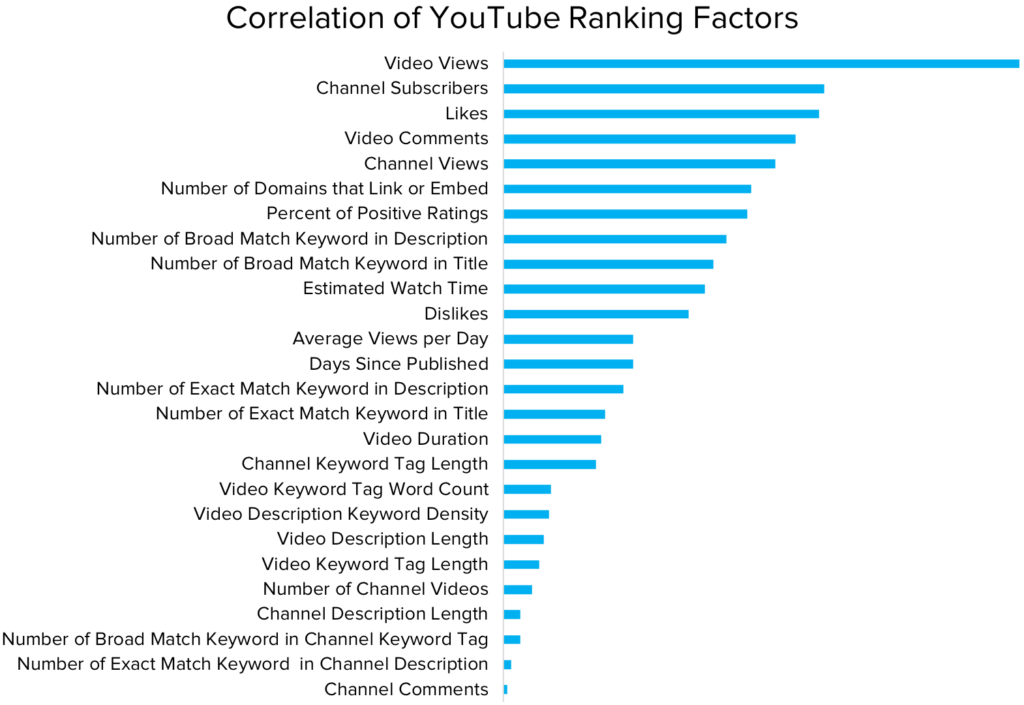
-
Streaming Platforms (YouTube): YouTube is the second-largest search engine after Google. You can tap into this vast user base by creating an engaging and keyword-optimized video on YouTube. Google also includes YouTube videos in its search results, which can dramatically increase your visibility. Remember to optimize your video title, description, and tags with relevant keywords for best results. Our Codedesign Youtube channel contributes with 20% of the organic influence, and build content is always directly connected with considerable improvement in traffic quality

-
Self-Hosted Videos: If you choose to host videos on your website, you can significantly increase the time users spend on your site, reducing your bounce rate. You can also create a video transcript to integrate relevant keywords naturally, improving your site's crawlability and SEO performance.
Remember, while a video can enhance SEO performance, aligning it with your overall SEO strategy, including keyword research, on-page optimization, and creating high-quality content, is critical.
Effective Social Media Marketing
Social media platforms have become the go-to channels for businesses to connect with their target audience. Videos are highly shareable, making them perfect for social media marketing campaigns. Whether it's short, attention-grabbing videos on platforms like Instagram and TikTok or longer, informative videos on YouTube and LinkedIn, video content has the potential to go viral, expand your reach, and attract new customers. Social media algorithms also prioritize video content, ensuring that your videos are more likely to be seen by your target audience. By leveraging the power of videos on social media, businesses can create a buzz, engage with their followers, and drive significant business growth.
Increased Customer Trust and Authority
Trust is a critical factor in any business-consumer relationship. Video production allows you to showcase your expertise, credibility, and commitment to customer satisfaction. You can establish yourself as an industry authority by creating educational videos, testimonials, and behind-the-scenes content. Videos provide a face to your brand, allowing customers to connect with you on a personal level. Customers who trust your brand are more likely to choose your products or services over competitors, resulting in significant business growth. Video testimonials, in particular, have a powerful impact, as they provide social proof and build trust among potential customers.
Measurable Results and Analytics
Unlike traditional marketing channels, video production offers valuable insights and analytics to measure the success of your campaigns. With platforms like YouTube, Vimeo, and social media advertising tools, you can track views, engagement, click-through rates, and conversions. These metrics allow you to refine your video production strategy, identify areas for improvement, and make data-driven decisions to optimize your marketing efforts. By analyzing the data, you can determine which videos resonate the most with your audience, identify trends, and adapt your content accordingly. This ability to measure and analyze results ensures that your video production efforts are aligned with your business goals and contribute to long-term growth.
Competitive Advantage
In today's competitive business landscape, staying ahead is essential for sustained growth. Video production offers a distinct competitive advantage by enabling businesses to stand out. You can differentiate your brand and leave a lasting impression on your target audience by delivering high-quality, creative, and engaging videos. An innovative and strategic approach to video production sets you apart as an industry leader, helping you gain a competitive edge and attract customers drawn to your unique offerings.
Personalized and Interactive Experiences
Video production opens doors to personalized and interactive experiences for your customers. Through interactive videos, such as quizzes, surveys, or choose-your-own-adventure narratives, you can actively engage viewers and create an immersive brand experience. By tailoring the content to individual preferences or allowing viewers to participate actively, you foster a sense of involvement and ownership, ultimately building stronger connections with your audience. These personalized and interactive video experiences create memorable moments that resonate with viewers and drive brand loyalty, resulting in increased customer retention and business growth.

Incorporating video production into your business strategy is necessary in today's digital landscape. The power of video to engage, captivate, and convert viewers is unmatched by any other form of content. Businesses can unlock remarkable growth potential by leveraging the benefits of enhanced brand awareness, improved audience engagement, boosted conversion rates, enhanced SEO performance, effective social media marketing, increased customer trust and authority, and measurable results and analytics. Embrace video production as a strategic tool, and watch your business soar to new heights of success.
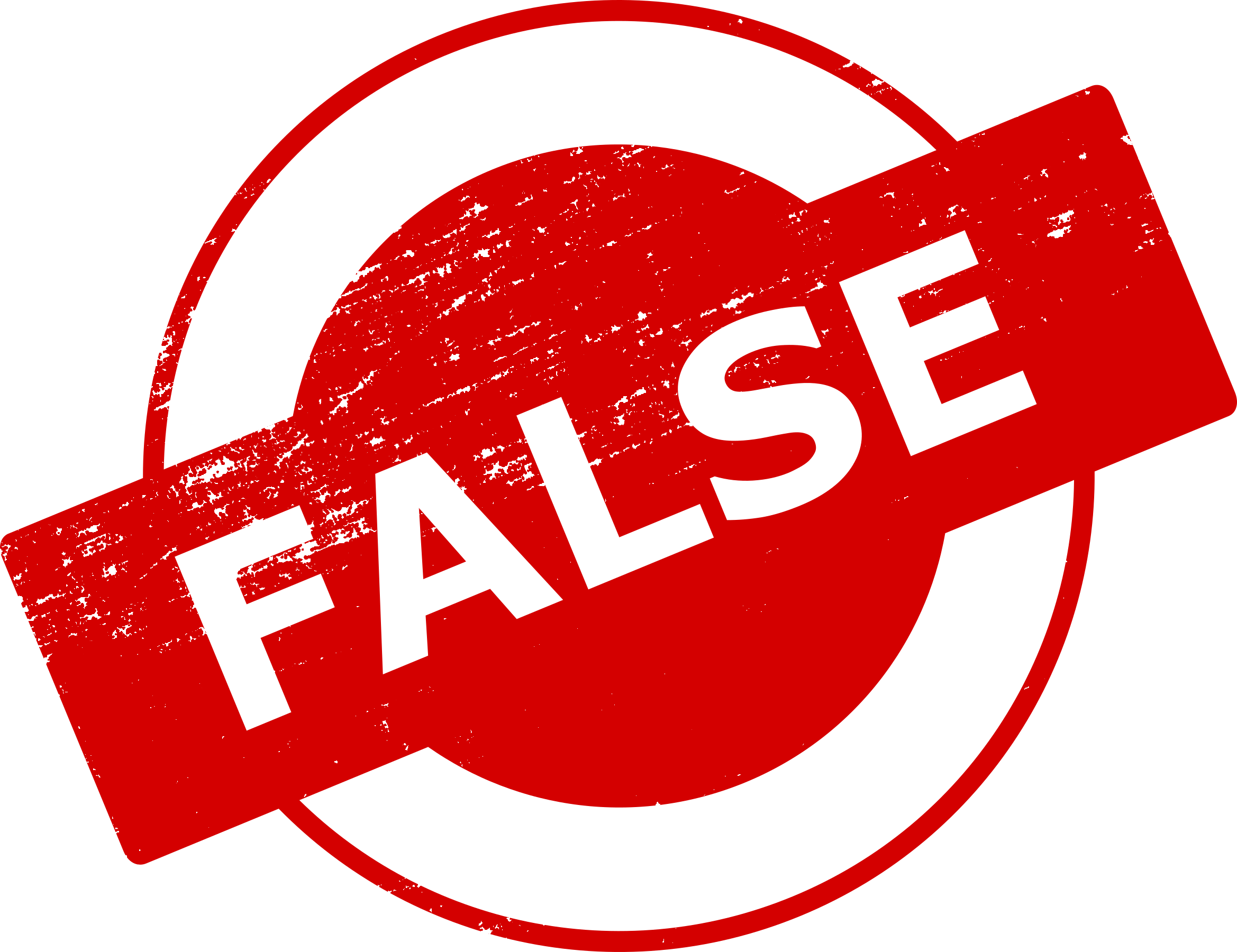
I am a B2B brand, so video content is not for me! False!
We've been ntegrating video content into B2B strategies very effectively to drive engagement, enhance brand awareness, and lead to higher conversion rates:
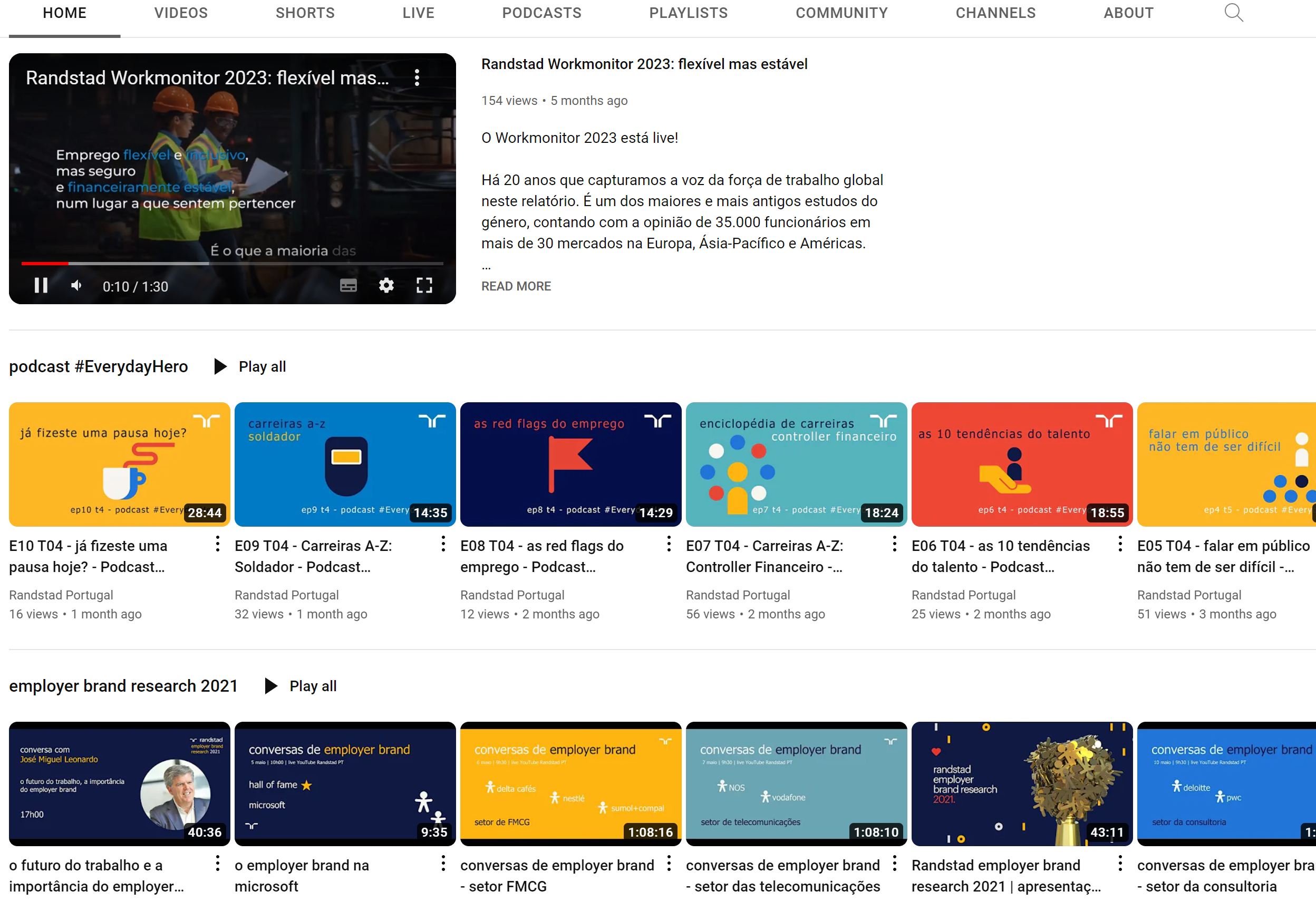
Checkout our client Randstad Youtube Channel
YouTube
YouTube, the world's second-largest search engine, is a vital platform for B2B video marketing. Here are some ways to use it:
-
Tutorial and Explainer Videos: Explain your product or service's functionalities and benefits clearly. A well-made tutorial video can help potential clients understand your offering better.
-
Webinars: Host and share industry-related webinars on your YouTube channel. These can help establish your brand as an industry authority and attract more subscribers.
-
Customer Testimonials: Share testimonials from satisfied customers. This not only builds trust but also allows potential customers to see your product or service in action.
Remember, always optimize your video titles, descriptions, and tags with relevant keywords for SEO benefits.
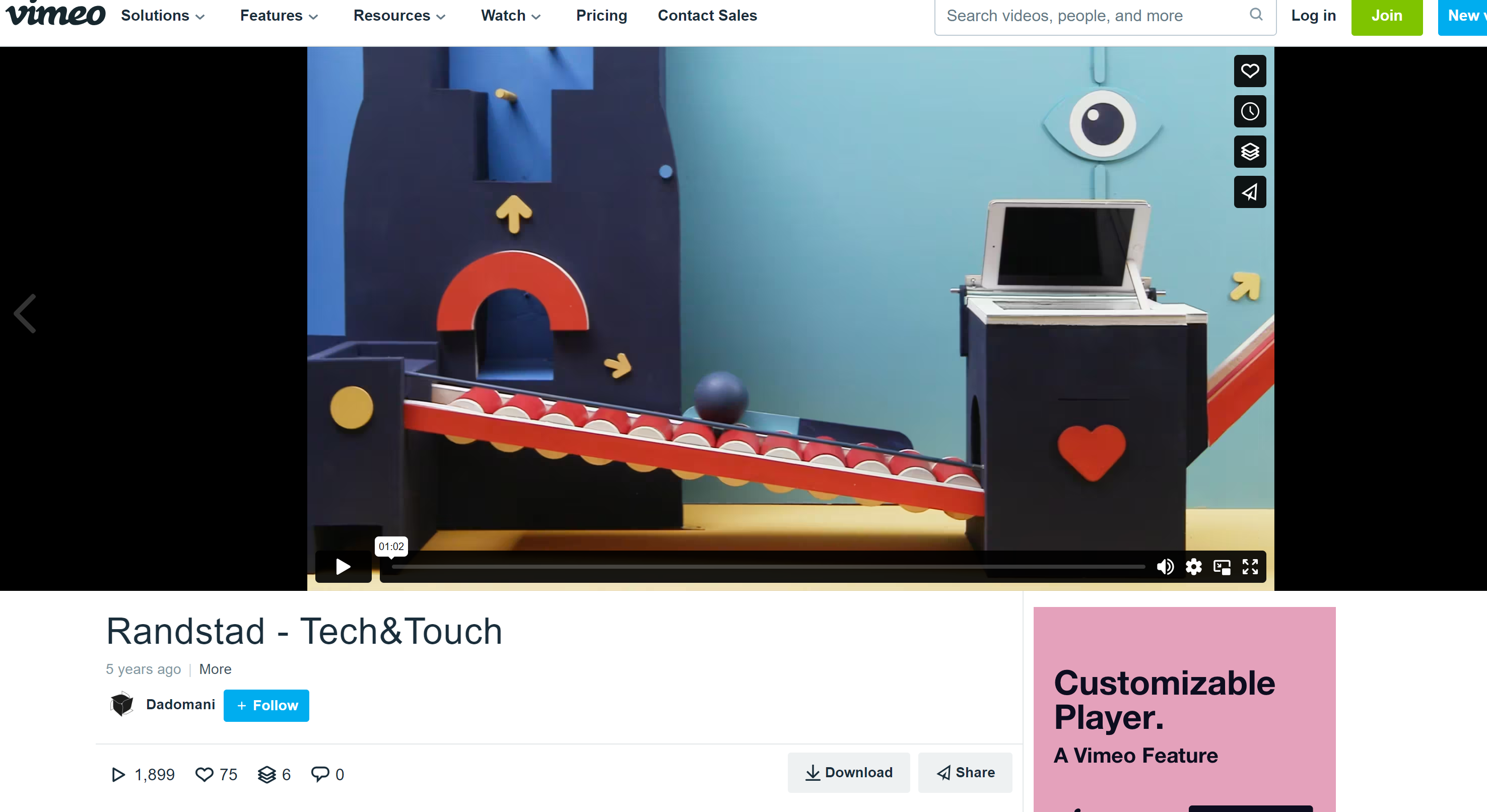
Checkout our client Randstad Vimeo Channel
Vimeo
Vimeo is renowned for high-quality, professional video content. Consider using Vimeo for:
-
High-Quality Product Demos: Vimeo's high-quality video rendering can make your product demos look more professional and appealing.
-
Training Videos: Sharing in-depth training videos for your product or service can help clients understand your product better.
-
Networking: Join groups related to your industry on Vimeo, share your videos there, and interact with other professionals.
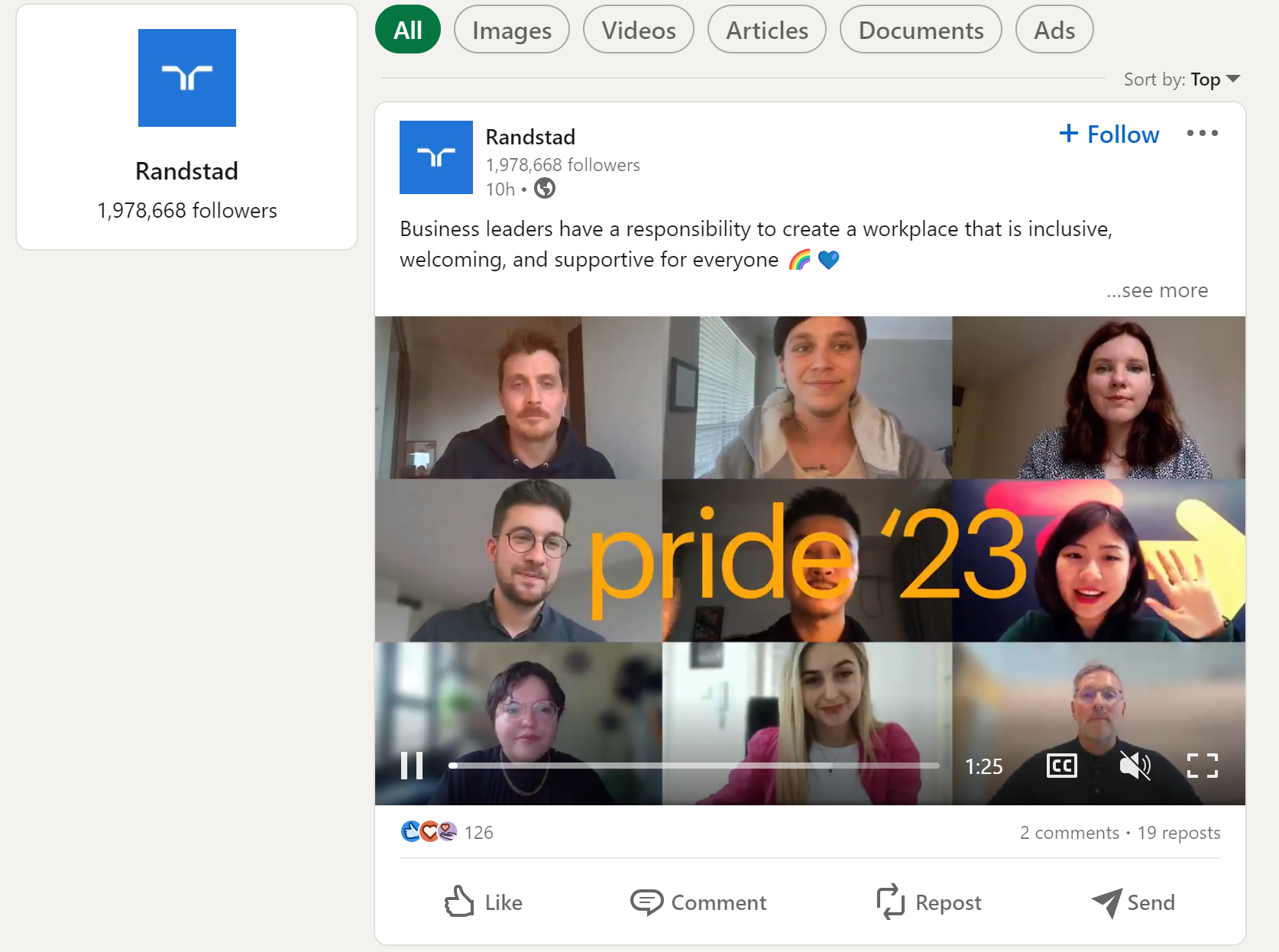
Checkout our client Randstad Linkedin Channel
LinkedIn is an excellent platform for B2B marketers:
- Share Business Updates: Use video to share updates about your company, product launches, or upcoming events.
- Thought Leadership: Share video content that establishes you as a thought leader in your industry. This could include industry insights, trends, and expert interviews.
Self-Hosted Videos
Hosting videos on your own website allows for greater control over your content. You can:
-
Landing Page Videos: Incorporate explainer or demo videos on your landing pages. This can significantly increase conversion rates.
-
Case Studies: In-depth case study videos on your website can showcase how your product or service helped a client, providing concrete evidence of its value.
-
Support Content: Create a library of how-to and instructional videos. These help your existing clients while simultaneously demonstrating your commitment to customer service to potential clients.
In all cases, ensure that your video content aligns with your overall B2B strategy, and always aim to provide value to your viewers.
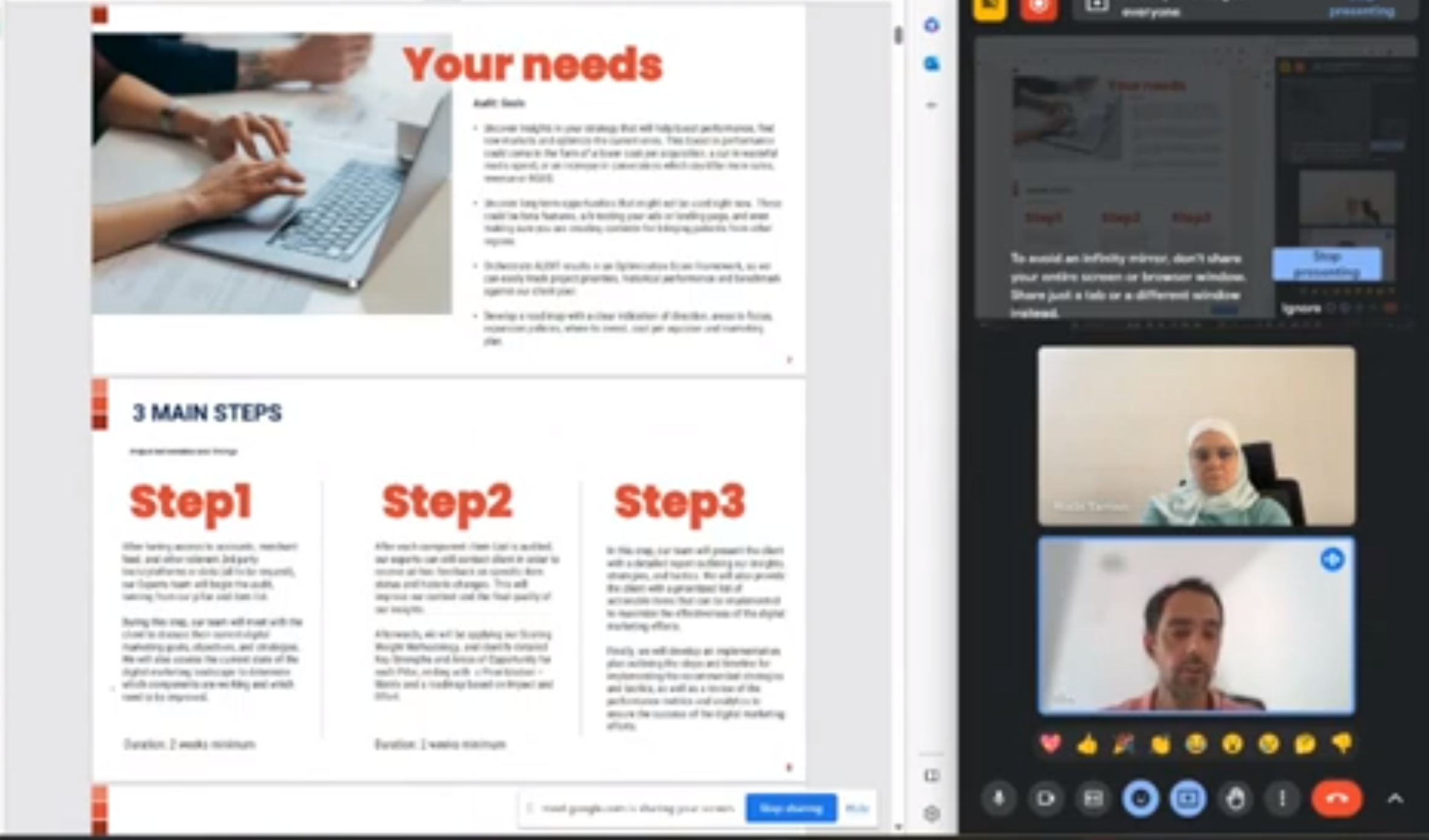
The power of webinars
Webinars are a powerful tool for engaging audiences, sharing knowledge, and positioning your brand as an authority in your industry. Below is a step-by-step guide on how to use a webinar as video content on various platforms:
Webinars offer a unique way to stand out and effectively communicate your value proposition. A well-executed webinar can do more than just tell potential clients about your products or services—it can show them. It brings your offerings to life in a way that static text or images simply can't replicate. Consider the value of a live demonstration where your audience can see your product or service in action and ask questions in real-time. This kind of dynamic, interactive content builds a level of trust and understanding that's hard to achieve through other mediums.
As a host, you're not just a faceless entity hiding behind a company logo; you're a real person sharing knowledge and engaging in genuine conversations. This human connection can strengthen your brand and deepen customer relationships. But the benefits of webinars don't stop when the live event ends. The content you create can be repurposed and shared across various platforms, extending its reach and lifespan. The webinar recording can be uploaded to YouTube for wider exposure, shared in email campaigns, or even broken down into smaller video clips for social media.
In essence, webinars allow you to offer valuable content, engage with your audience in a meaningful way, and promote your business all at once. They're a versatile tool that can enhance your B2B marketing strategy and drive your business growth.

How to do a Webinar on YouTube
You can use YouTube's "Go Live" feature to host a live webinar. To do this, simply click on the video camera icon at the top of your YouTube home screen, then click "Go Live". Set up your webinar title, description, and settings. Once everything is set, click "Go Live" to start the webinar. If you've hosted a webinar elsewhere, you can upload the recording to YouTube to reach a larger audience. Click the video camera icon at the top of your home screen and select "Upload Video". Optimize your video title, description, and tags for better discoverability.
Hosting a webinar on YouTube is a great way to reach a larger audience and engage them interactively. Here's a step-by-step guide on how you can do it:
-
Set Up Your YouTube Channel: If you don't already have one, you'll need to create a YouTube channel. You'll use this to host your webinar.
-
Verify Your Account: In order to host live streams, you must first verify your YouTube account. You can do this by going to youtube.com/verify and following the prompts.
-
Enable Live Streaming: After verifying, go to the YouTube Studio dashboard and select "Channel", then "Features". Here, enable the live streaming feature.
-
Schedule Your Webinar: Once live streaming is enabled, go to the "Create" button at the top right corner of your YouTube home screen and click "Go Live". In the live control room, click "Schedule Stream". Fill out the title, description, date, and time of your webinar. You can also upload a thumbnail image to attract viewers.
-
Promote Your Webinar: Share the link to your scheduled webinar on your social media accounts, website, and via email newsletters. Encourage people to set a reminder for the event through YouTube.
-
Prepare Your Presentation: Make sure your content is engaging and provides value to your audience. Use slides, visuals, and live demonstrations to keep your audience engaged.
-
Check Your Equipment: Ensure your microphone, camera, and internet connection are all working correctly. It's advisable to have a backup plan in case of technical difficulties.
-
Go Live: When it's time for your webinar, go to the YouTube Live Control Room and select your scheduled event. Click "Go Live" to start the webinar. During the webinar, you can interact with viewers through the live chat feature.
-
End Your Webinar: When you're finished with the webinar, click "End Stream" in the Live Control Room.
-
Follow Up: After the webinar, engage with the comments on the video, and reach out to your attendees with a follow-up email. You can also repurpose the webinar recording into smaller video clips for social media or blog posts.
Remember, practice makes perfect, so don't worry if everything isn't flawless your first time. Each webinar will be a learning experience, and you'll improve with each one you host.

Webinar on Facebook
Hosting a webinar on Facebook is an excellent way to interact with your audience in real-time. Here is a simple step-by-step guide on how you can do it:
-
Prepare Your Content: Like any webinar, preparation is key. Make sure you have all your materials ready and rehearse your presentation.
-
Create a Facebook Event: To generate buzz for your webinar, create an event on your Facebook page. Provide details such as date, time, and what attendees can expect from your webinar.
-
Promote Your Webinar: Share the event across your social media platforms and send invites to your target audience. Encourage shares to reach a wider audience.
-
Check Your Equipment: Ensure your webcam and microphone are working correctly. A good internet connection is vital to avoid buffering or connection issues.
-
Go Live: When it's time for your webinar, go to your Facebook page and click on "Live Video" in the post composer. Add a description and title for your live video, then click "Go Live".
-
Engage With Your Audience: Interact with your audience throughout the webinar. Answer questions and encourage feedback in the comments section.
-
End Your Webinar: Once you have covered all your points, thank your audience for their time and end the live video by clicking "End Live Video".
-
Post-Webinar Engagement: After the live webinar, the video will be saved to your Facebook page. Engage with any new comments, and consider sharing the video in a post-webinar email to attendees.
Remember, hosting a webinar on Facebook is not just about delivering information but also about encouraging interaction. Engage your audience by asking them questions, requesting their thoughts, and answering their queries.
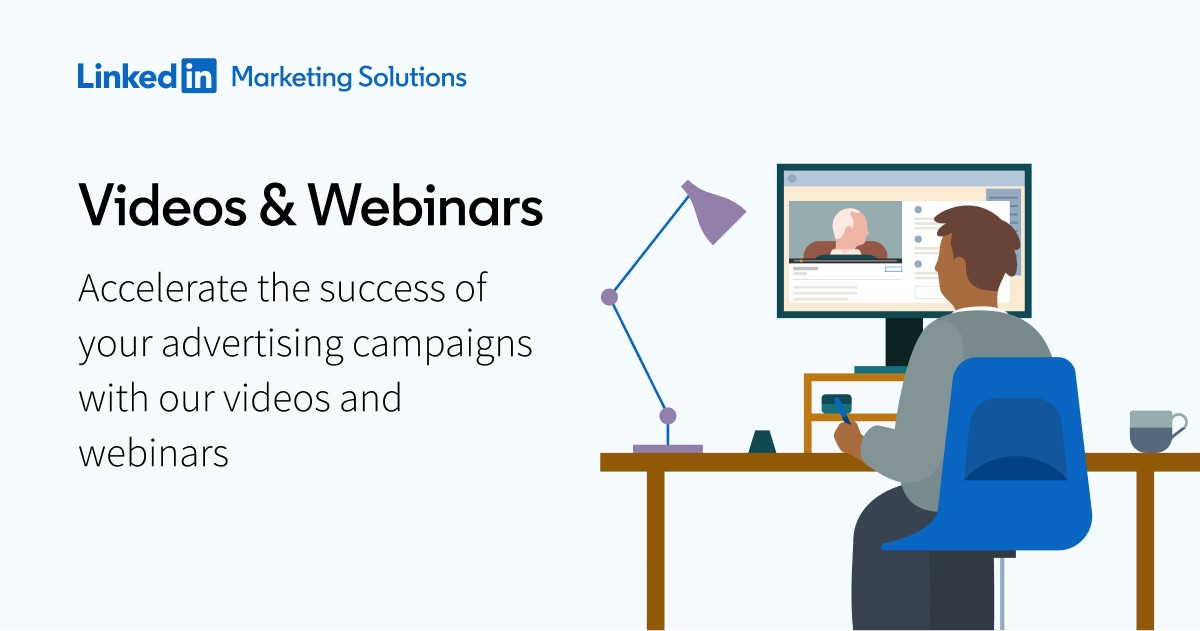
LinkedIn Live
LinkedIn also offers a live video feature, though you'll need to apply to become a LinkedIn Live broadcaster. Once approved, you can use third-party broadcasting tools, like StreamYard or Restream, to host your live webinar.
Hosting a webinar on LinkedIn is a powerful way to share your expertise, engage with your professional network, and build your brand. Here's a step-by-step guide:
-
Preparation: Plan your content carefully. Ensure it is relevant, valuable, and engaging for your LinkedIn network.
-
Announcement Post: LinkedIn doesn't have built-in functionality for hosting webinars, so you will need to use a webinar platform such as Zoom, GoToWebinar, or WebEx. Once you've scheduled your webinar on the platform of your choice, create a post on LinkedIn announcing your webinar. Include the date, time, topics to be covered, and a link to register for the webinar.
-
Promotion: Share the registration link in relevant LinkedIn groups and via direct messages to your contacts who might be interested. Consider running LinkedIn ads to reach a wider audience.
-
Create a LinkedIn Event: This is a relatively new feature on LinkedIn that allows you to create a virtual event. You can invite your network, share updates, and communicate with attendees. Add the registration link for your webinar in the event description.
-
Post Regular Updates: Keep your network and attendees updated about the webinar. Share insights into the topics you'll be covering, introduce your speakers, or post teaser videos.
-
Conduct the Webinar: Use the webinar platform to host your webinar at the scheduled time. Ensure you have a good internet connection and your audio and video equipment are working well.
-
Engage with Attendees: During the webinar, encourage interaction by asking for questions, comments, and feedback.
-
Follow-up: After the webinar, share key takeaways, slides, or a recording of the webinar on LinkedIn. Thank those who attended and continue the conversation in the comments section.
Remember, the goal of hosting a webinar on LinkedIn is to provide value to your network, position yourself as a thought leader in your industry, and build meaningful relationships.
Webinar Hosting Platforms

- Zoom: On Zoom, you can host webinars with up to 100 interactive video participants. You can either choose to broadcast it live or record it for later use.

- GoToWebinar: This platform is specially designed for hosting webinars. You can schedule your webinar, customize your invitation, and track performance.
Remember, after the live webinar, the recorded video can be used as evergreen content on your website, social media, or email newsletters. Optimize your title, description, and tags with relevant keywords for SEO benefits. Also, engage with your audience through the comment section to boost engagement rates.
The future of video content
The future of video content is dynamic and exciting, with technology advancements like Artificial Intelligence (AI) playing a significant role in shaping it.
- Interactive Videos: Interactive videos, which allow viewers to influence the content's narrative, are gaining popularity. They provide a personalized experience, increasing engagement and retention.
- Virtual Reality (VR) and Augmented Reality (AR): VR and AR are set to revolutionize video content by offering immersive experiences. VR transports viewers to a different reality, while AR enhances the real world with digital elements.
- Live Streaming: The popularity of live streaming is expected to grow, driven by its ability to provide real-time interaction between content creators and viewers.
- Short-Form Videos: Platforms like TikTok and Instagram Reels have demonstrated the power of short, engaging video content. This trend is likely to continue, as attention spans continue to shorten.
- Video SEO: As search engines get better at understanding video content, the importance of optimizing video for SEO will increase.

AI's Influence
Artificial Intelligence is set to greatly influence the future of video content in several ways:
- Automated Video Creation: AI tools are becoming increasingly capable of creating and editing video content, making the production process faster and more cost-effective.
- Personalization: AI can analyze viewer behavior to provide personalized video recommendations, improving user experience and engagement.
- Video Analytics: AI-powered analytics can provide deeper insights into viewer behavior, helping content creators optimize their videos to better meet viewer preferences.
- Voice and Facial Recognition: AI technologies can identify individuals in videos and understand spoken words, enabling more precise targeting and content customization.
- Improved Accessibility: AI can auto-generate captions and subtitles or translate video content, making it more accessible to a global audience.
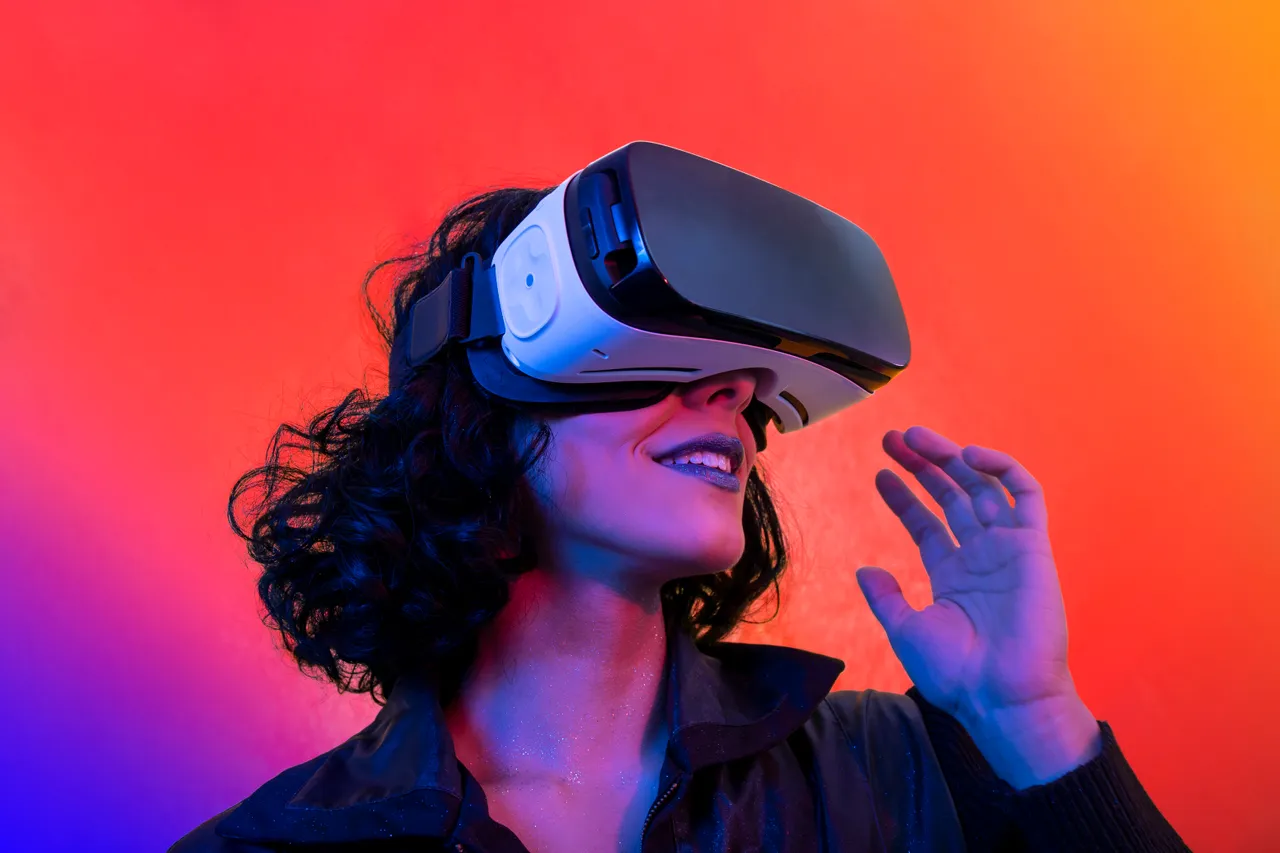
VRs Influence
Creating video content for VR glasses requires a unique approach compared to traditional video creation. Here's a guide on how you can do it:
- Get the Right Equipment: For VR video, you'll need a camera that can capture 360-degree footage. There are many 360-degree cameras available in the market today, like the Insta360 One X, GoPro Max, or Ricoh Theta V. You'll also need a sturdy tripod to minimize camera movement.
- Plan Your Scenes: In VR, the viewer can look in any direction. Therefore, plan your scenes to make full use of the 360-degree environment. Think about what you want to be happening in each part of the scene to create an immersive experience.
- Film the Video: When filming, ensure the camera is at eye level to mimic a natural viewpoint for the viewer. Minimize camera movement to avoid causing motion sickness for viewers.
- Post-Production: Once you have your footage, you'll need a specialized software to stitch together the 360-degree footage. Programs like Adobe Premiere Pro and Final Cut Pro X have capabilities for editing 360-degree video. Remember to review the video with a VR headset to ensure a good user experience.
- Optimize and Upload: After your video is edited, it's time to share your creation. Major platforms like YouTube and Facebook support 360-degree video. When uploading, remember to tag your video as 360 or VR so the platform knows to display it properly.
- Promotion: Finally, promote your VR video through your social channels, website, or email newsletters. Ensure to inform viewers they'll need a VR headset to fully experience the video.
Remember, creating VR video content is not just about using new technology, but also about crafting an immersive, engaging story that takes full advantage of the 360-degree medium.
FAQS - Frequently Asked Questions
How does video production enhance brand awareness?
Video production significantly enhances brand awareness by offering a dynamic and engaging way to showcase a brand's personality, values, and offerings. This visual and auditory medium captures attention more effectively than static images or text, allowing brands to create memorable experiences for their audience. High-quality video content can be shared across various platforms, increasing visibility and reach. For instance, Codedesign has leveraged video marketing for clients in the hospitality and ecommerce sectors, resulting in increased brand recognition and a broader audience base. Videos also facilitate storytelling, enabling brands to connect emotionally with viewers, fostering a stronger and more memorable brand identity.
What types of videos are most effective for engaging an audience?
The most effective types of videos for engaging an audience include explainer videos, product demos, customer testimonials, and personalized brand stories. Explainer videos are particularly impactful, as they can simplify complex information into digestible and entertaining content. Product demos highlight the features and benefits of a product, enhancing customer understanding and interest. Customer testimonials provide social proof, increasing credibility and trust. Brand stories that focus on the company’s mission, vision, and values foster emotional connections. For example, Codedesign has utilized explainer and testimonial videos for clients in the tech industry, significantly increasing engagement rates and audience interest.
How can video production improve audience engagement metrics?
Video production can dramatically improve audience engagement metrics such as time on page, click-through rates, and social media interactions. Videos encourage viewers to spend more time on a website, which signals to search engines that the content is valuable, potentially improving search rankings. Additionally, videos have a higher likelihood of being clicked on and shared, especially if they are informative, entertaining, or emotionally resonant. For Codedesign's clients, incorporating engaging video content into digital strategies has led to increased dwell times and higher engagement on social media platforms, showcasing the compelling nature of well-produced videos.
In what ways do videos boost conversion rates on landing pages?
Videos on landing pages can significantly boost conversion rates by providing a concise and compelling argument for the value proposition of a product or service. They can quickly grab the visitor's attention and deliver information in a more digestible format than text alone. Videos also offer the opportunity to demonstrate product use, share testimonials, and convey brand personality, which builds trust and persuades prospects to take action. According to industry statistics, landing pages featuring videos can increase conversion rates by up to 80%. Codedesign has seen firsthand how embedding videos on landing pages for clients in various sectors has led to higher engagement and conversion rates.
Can video content enhance a website's SEO performance?
Absolutely, video content can significantly enhance a website's SEO performance. Search engines prioritize content that offers a good user experience, and videos are highly effective in keeping visitors engaged and on your site longer. This decreases bounce rates and increases dwell time, which are positive signals to search engines. Additionally, videos can be optimized for search with the right titles, descriptions, and tags, making them more likely to appear in search results. Embedding videos can also lead to higher click-through rates from search engine results pages. Codedesign has successfully integrated video content into the SEO strategies of its clients, witnessing improved search rankings and organic traffic.
How does video content fit into an effective social media marketing strategy?
Video content is a cornerstone of an effective social media marketing strategy due to its high engagement rates and shareability. Platforms like Facebook, Instagram, and Twitter prioritize video content in their algorithms, increasing visibility for brands that utilize this medium. Videos are more likely to be shared than other types of content, extending a brand's reach and attracting new followers. They also allow for creative storytelling and personalization, which can strengthen the connection between a brand and its audience. Codedesign's experience with crafting targeted video content for social media has led to increased engagement, follower growth, and brand awareness for its clients.
How does video production contribute to building customer trust and authority?
Video production contributes to building customer trust and authority by allowing brands to communicate their expertise, quality, and reliability in a transparent and engaging manner. Through how-to guides, product demonstrations, and behind-the-scenes looks, companies can showcase their knowledge and commitment to quality, establishing themselves as industry leaders. Customer testimonials and case studies presented through video further enhance credibility by providing real-life examples of satisfied customers. Codedesign has leveraged video content to position its clients as authoritative voices in their fields, significantly boosting consumer trust and brand loyalty.
What are the key benefits of using videos for B2B marketing strategies?
Using videos in B2B marketing strategies offers several key benefits, including the ability to explain complex products and services in an accessible manner, foster deeper business relationships through personalized content, and improve lead generation and conversion rates. Videos can effectively communicate a brand's value proposition and differentiators, helping to educate and persuade decision-makers. Additionally, video content is highly shareable, facilitating broader dissemination through professional networks and social media. Codedesign has utilized strategic video marketing to enhance the B2B sales funnel for clients, leading to increased engagement and stronger business partnerships.
How can businesses measure the success and ROI of their video marketing efforts?
Businesses can measure the success and ROI of their video marketing efforts by tracking metrics such as view count, engagement rates (likes, shares, comments), conversion rates, click-through rates, and the time spent on the page. These metrics provide insights into how well the content is resonating with the audience and influencing their behavior. Additionally, analyzing the performance of video content in driving traffic to a website or leading viewers to take a desired action (e.g., filling out a form, making a purchase) can help quantify its impact on business objectives. Codedesign recommends setting clear goals for each video campaign and using analytics tools to monitor these key performance indicators closely.
What future trends in video production should businesses be aware of to stay ahead?
Businesses should be aware of several future trends in video production to stay ahead, including the rise of short-form content, the integration of augmented reality (AR) and virtual reality (VR), the importance of personalization and interactivity, and the increasing use of live video. Short-form videos cater to the decreasing attention spans of online audiences and are favored by social media algorithms. AR and VR offer immersive experiences that can differentiate a brand and enhance customer engagement. Personalized and interactive videos improve user experience and conversion rates. Live video, such as webinars and live streams, fosters real-time engagement and authenticity. Staying abreast of these trends, as Codedesign does for its clients, ensures that businesses can leverage the latest video technologies and strategies to connect with their audiences effectively.

About Bruno GavinoBruno Gavino is the CEO and partner of Codedesign, a digital marketing agency with a strong international presence. Based in Lisbon, Portugal, with offices in Boston, Singapore, and Manchester (UK) Codedesign has been recognized as one of the top interactive agencies and eCommerce agencies. Awarded Top B2B Company in Europe and Top B2C company in retail, Codedesign aims to foster personal relationships with clients and create a positive work environment for its team. He emphasizes the need for digital agencies to focus on data optimization and performance to meet the increasingly results-driven demands of clients. His experience in digital marketing, combined with a unique background that includes engineering and data, contributes to his effective and multifaceted leadership style. |

About CodedesignCodedesign is a digital marketing agency with a strong multicultural and international presence, offering expert services in digital marketing. Our digital agency in Lisbon, Boston, and Manchester enables us to provide market-ready strategies that suit a wide range of clients across the globe (both B2B and B2C). We specialize in creating impactful online experiences, focusing on making your digital presence strong and efficient. Our approach is straightforward and effective, ensuring that every client receives a personalized service that truly meets their needs. Our digital agency is committed to using the latest data and technology to help your business stand out. Whether you're looking to increase your online visibility, connect better with your audience, get more leads, or grow your online sales. For more information, read our Digital Strategy Blog or to start your journey with us, please feel free to contact us. |
CodeDesign is leading:
- Digital Agency
- Digital Marketing Agency
- Digital Ecommerce Agency
- Amazon Marketing Agency




Add comment ×